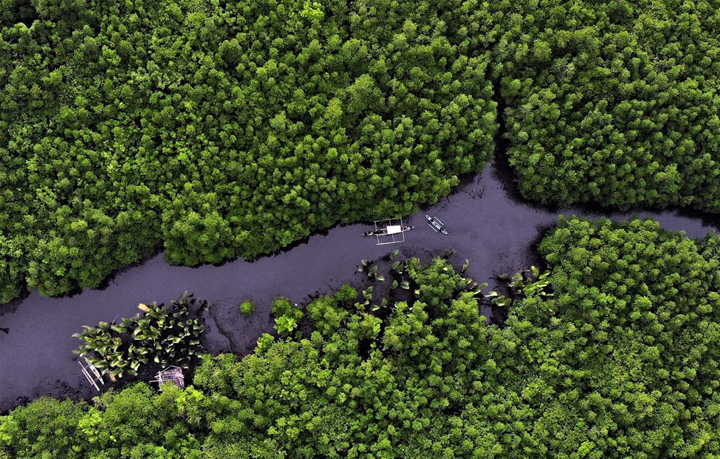
THE value of the Philippines’s mangrove assets declined by half in just 23 years, according to the latest report released by the World Bank.
In its report titled, “The Changing Wealth of Nations 2021,” the value of mangrove assets of the Philippines declined by 50 percent to $5.439 billion in 2018 from $10.788 billion in 1995.
The Philippines posted the largest decline among the Top 19 economies with the highest Mangrove Assets between 1995 and 2018.
“As produced capital increased at the global level, so did the value of the mangroves protecting that capital,” the report stated. “Countries like Jamaica, Cuba, Thailand, and the Philippines lost considerable value where there was a decline in mangrove cover and coastal population density.”
Of the top 19 economies, China saw the highest increase in value at 767 percent followed by Vietnam at 591 percent; Bangladesh, 402 percent; Japan, 311 percent; and Taiwan, 267 percent.
Apart from the Philippines, countries in the top 19 that posted declines in their mangrove asset values were Thailand with a contraction of 44 percent; Cuba, 32 percent; Jamaica, 16 percent; United Arab Emirates, 12 percent; Guyana, 11 percent; Ecuador, 7 percent; and the United States, 5 percent.
Globally, the annual benefit per hectare of mangrove more than doubled between 1995 and 2018 to $1,689 per hectare, from $643 per hectare.
From 1995 to 2018, the report noted that the number of people directly affected by flooding in mangrove areas grew by 66 percent, and capital stock damages grew by 268 percent.
“Without mangroves, increased flood damage would have been even greater. In 2018, mangroves protected more than 6 million people from annual flooding and prevented additional annual losses of $24 billion of produced capital,” the report said.
The report added that global wealth may have increased but this has occurred at the expense of the world’s future prosperity. This has even been exacerbated by inequalities worldwide.
The World Bank said many countries are depleting their natural resources in favor of short-term gains such as increasing economic growth.
The Washington-based lender said growing prosperity has been accompanied by unsustainable management of some natural assets.
Low- and middle-income countries, which include the Philippines, saw their forest wealth per capita decline 8 percent from 1995 to 2018, reflecting significant deforestation.
Meanwhile, the value of global marine fish stocks collapsed by 83 percent due to poor management and overfishing over the same period. The projected impacts of climate change may exacerbate these trends.
“A deeper and more nuanced understanding of the sustainability of wealth is crucial to a green, resilient, and inclusive future,” said World Bank Managing Director for Development Policy and Partnerships, Mari Pangestu.
“It is essential that renewable natural capital and human capital are given the same importance as more traditional sources of economic growth, so that policymakers take steps to enable long- term prosperity,” she added.
The report outlined several priorities for policymakers to diversify and rebalance their national portfolios to be more resilient and sustainable.
It recommends actively investing in public goods like education, health, and nature, to prevent unsustainable depletion, and manage future risks.
Recommendations also include policy and pricing measures that help reflect the social value of assets and to steer private investment toward better outcomes for all. This may include, for example, actions like repurposing fisheries subsidies, and taking action to price carbon and promote renewable energy assets. The report tracked the wealth of 146 countries between 1995 and 2018, by measuring the economic value of renewable natural capital (such as forests, cropland, and ocean resources).
The World Bank also tracked nonrenewable natural capital (such as minerals and fossil fuels), human capital (earnings over a person’s lifetime), produced capital (such as buildings and infrastructure), and net foreign assets. The report also accounted for blue natural capital—in the form of mangroves and ocean fisheries—for the first time.

